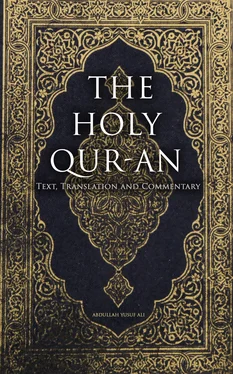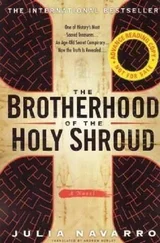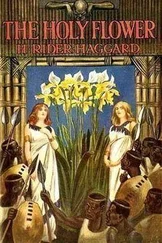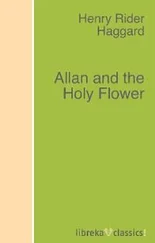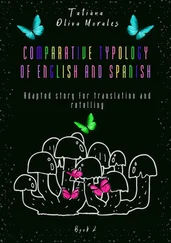Abdullah Ali - The Holy Qur-an - Text, Translation and Commentary
Здесь есть возможность читать онлайн «Abdullah Ali - The Holy Qur-an - Text, Translation and Commentary» — ознакомительный отрывок электронной книги совершенно бесплатно, а после прочтения отрывка купить полную версию. В некоторых случаях можно слушать аудио, скачать через торрент в формате fb2 и присутствует краткое содержание. Жанр: unrecognised, на английском языке. Описание произведения, (предисловие) а так же отзывы посетителей доступны на портале библиотеки ЛибКат.
- Название:The Holy Qur-an: Text, Translation and Commentary
- Автор:
- Жанр:
- Год:неизвестен
- ISBN:нет данных
- Рейтинг книги:5 / 5. Голосов: 1
-
Избранное:Добавить в избранное
- Отзывы:
-
Ваша оценка:
- 100
- 1
- 2
- 3
- 4
- 5
The Holy Qur-an: Text, Translation and Commentary: краткое содержание, описание и аннотация
Предлагаем к чтению аннотацию, описание, краткое содержание или предисловие (зависит от того, что написал сам автор книги «The Holy Qur-an: Text, Translation and Commentary»). Если вы не нашли необходимую информацию о книге — напишите в комментариях, мы постараемся отыскать её.
The Holy Qur-an: Text, Translation and Commentary — читать онлайн ознакомительный отрывок
Ниже представлен текст книги, разбитый по страницам. Система сохранения места последней прочитанной страницы, позволяет с удобством читать онлайн бесплатно книгу «The Holy Qur-an: Text, Translation and Commentary», без необходимости каждый раз заново искать на чём Вы остановились. Поставьте закладку, и сможете в любой момент перейти на страницу, на которой закончили чтение.
Интервал:
Закладка:
The need for an explanation of the verses of the Qur'ān arose quite early. Even before the whole of the Qur'ān was revealed, people used to ask the Apostle all sorts of questions as to the meaning of certain words in the verses revealed, or of their bearing on problems as they arose, or details of certain historical or spiritual matters on which they sought more light. The Apostle's answers were carefully stored in the memory of the Companions ( as-hāb ) and were afterwards written down. In the next generation, the Tābi‘īn , were those who had not personally conversed with the Apostle, like the Companions, but had conversed with the Companions and learned from them. Subsequent generations always went back to establish a chain of evidence through the Tābi‘īn and the Companions. Through them grew up the science of Hadīth or Traditions. As this literature grew, it became necessary to establish strict rules by which the evidence could be examined and tested, so as to separate that which was considered to be established from that which was doubtful or weak, and that which was to be rejected as unproved. In the evolution of the science of Hadīth , it became clear that even among the Companions certain persons had better memories than others, or better opportunities of becoming really acquainted with the Apostle’s true meaning, or in other ways, a better title to be called true expositors, and the number of such persons came to be limited to ten only. Similarly the claims of the Tābi‘īn came to be examined and graded, and so on. Thus arose a new science, in which the names and positions of persons in Hadīth literature were examined biographically and in other ways.
The Hadīth literature dealt with all sorts of matters, including Theology, Ethics, and Exegesis (explanation of the Qur'ān). Exegesis soon became an independent science by itself and was called Tafsīr , and the sphere of Tafsīr itself began to widen as the experience and knowledge of the Arabs and Arabic writers began to increase. Besides the examination of correct traditions from various kinds and grades of authorities, it began to examine the meaning of words philologically, collecting a vast amount of learning as to root meanings, the usage of the Quraish tribe of Arabs, to which the Apostle belonged, the usage and meaning of words in the purest original Arabic before it became mixed up with foreign idioms and usages by the use of the Arabic language by non-Arabs in Islam, and by the influence of the enormous geographical expansion of the Arab race in the first few centuries of Islam. The increasing knowledge of history and of Jewish and Christian legends enabled the Commentators to illustrate the Text of the Holy Book with reference to these. Sometimes the amount of Jewish stuff (some of it absurd), which found its way into the Commentaries, was out of all proportion to its importance and relevance, and gave rise to the legend, which has been exploited by polemical Christian and Jewish writers, that Islam was built up on an imperfect knowledge of Christianity and Judaism, or that it accepts as true the illustrative legends from the Talmud or the Midrash or various fantastic schools of Christianity. Then came philosophy and the mystic doctrine of the Sūfī schools. The development of the science of kalām (built on formal logic), and its further offshoot the ‘IIm-ul-‘Aqāid (the philosophical exposition of the grounds of our belief) introduced further elements on the intellectual side, while Tāawīl (esoteric exposition of the hidden or inner meaning) introduced elements on the spiritual side, based on a sort of transcendental intuition of the expositor. The Sūfī mystics at least adhered to the rules of their own Orders, which were very strict. But many of the non-Sūfī writers on Tāawīl indulged in an amount of licence in interpretation which has rightly called forth a protest on the part of the more sober ‘Ulamā.
For my part l agree with this protest. While freely reserving the right of individual judgment on the part of every earnest writer, I think the art of interpretation must stick as closely as possible to the text which it seeks to interpret. Every serious writer and thinker has a right to use all the knowledge and experience he possesses in the service of the Qur'ān. But he must not mix up his own theories and conclusions, however reasonable, with the interpretation of the Text itself, which is usually perfectly perspicuous, as it claims it to be. Our difficulties in interpretation often arise from various causes, of which l will mention just a few:
(1) Arabic words in the Text have acquired other meanings than those which were understood by the Apostle and his Companions. All living languages undergo such transformations. The early Commentators and Philologists went into these matters with a very comprehensive grasp, and we must accept their conclusions. Where they are not unanimous, we must use our judgment and historic sense in adopting the interpretation of that authority which appeals to us most. We must not devise new verbal meanings.
(2) Even since the early Commentators wrote, the Arabic language has further developed, and later Commentators often abandon the interpretations of earlier Commentators without sufficient reason. In exercising our selective judgment in such cases it would be a good rule to prefer the earlier to the later interpretation, though, where a later writer has reviewed the earlier interpretations and given good reasons for his own view, he has an advantage which we must freely concede to him.
(3) Classical Arabic has a vocabulary in which the meaning of each root-word is so comprehensive that it is difficult to interpret it in a modern analytical language word for word, or by the use of the same word in all places where the original word occurs in the Text. A striking example is furnished by the word Sabr , about which see my notes on 2:45 and 2:153. Even though one particular shade of meaning may be predominant in any particular passage, the others are latent. So in a ray of light, when a prism analyses it, we may look at a portion of the field where a particular colour predominates, but other colours do not escape our glance. An Arabic word is often a full ray of light; when a translator looks at it through the prism of a modern analytical language, he misses a great deal of its meaning by confining his attention to one particular colour. European translators have often failed in this respect and sometimes even been landed in absurdities because these delicate rich tones are not studied in their languages or literatures, and they do not look for them or appreciate them in the best examples of Oriental style. If they despise them or think them fantastic, they had best leave the interpretation of Oriental literatures alone. This is all the more so in religious or spiritual literature. No human language can possibly be adequate for the expression of the highest spiritual thought. Such thought must be expressed symbolically in terse and comprehensive words, out of which people will perceive just as much light and colour as their spiritual eyes are capable of perceiving. It is possible that their prism will only show them a dark blue while a whole glorious symphony of colours is hidden from their eyes. And so it comes about that through the prism of a clever English translation, poor ‘Umar (Omar) Khayyām emerges as a sensualist and cynic who sees no higher purpose in life than drinking wine, dallying with women, and holding up his hands in despair at "this sorry scheme of things entire." And so the parables of stern morality in the Qur'ān, its mystic earnestness, and its pictures of future beatitude are distorted into idle fables, incoherent effusions, and a sensual paradise!
Читать дальшеИнтервал:
Закладка:
Похожие книги на «The Holy Qur-an: Text, Translation and Commentary»
Представляем Вашему вниманию похожие книги на «The Holy Qur-an: Text, Translation and Commentary» списком для выбора. Мы отобрали схожую по названию и смыслу литературу в надежде предоставить читателям больше вариантов отыскать новые, интересные, ещё непрочитанные произведения.
Обсуждение, отзывы о книге «The Holy Qur-an: Text, Translation and Commentary» и просто собственные мнения читателей. Оставьте ваши комментарии, напишите, что Вы думаете о произведении, его смысле или главных героях. Укажите что конкретно понравилось, а что нет, и почему Вы так считаете.
